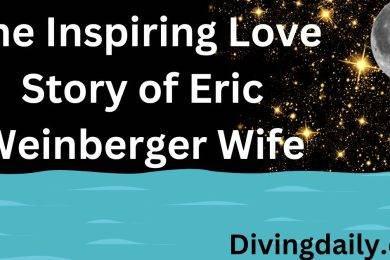People who have built an engaged and large following on Instagram are known as ‘influencers’ as their followers’ respect and idolize them and their opinions. They may have gained a loyal following due to their lifestyle, clothes, job, or hobbies, or the stories they tell.
The influencers pool is diverse and vast, which means almost any brand can utilize Instagram influencer marketing for their target demographic and industry.
The rise of Instagram influencers began enormous opportunities for businesses to market their products to their target audience authentically and thus started the ‘paid post’ phenomenon. Over the past few years, marketing with an influencer has been on the rise.
Instagram influencers leverage a loyal following and better-than-average engagement that influence their followers to make lifestyle decisions and purchases. These purchasing decisions are based on Instagram product placements, influencers’ tagged suggestions and straight-forward recommendations, and other subtle (or not-so-subtle) influences.
What Is An Instagram Influencer?
Instagram has grown dramatically in the past few years, increasing its feature set and adding over 200 million active users monthly. Instagram has become the most utilized and relevant social media platforms in today’s scene with Stories’ introduction, a Snapchat-like transient content feature.
Many creators are on the social platform looking to gain the attention of Instagram’s massive user base and leader in their share of Instagram success. These Instagram influencers gather large followings through their ability to engage and connect with their compelling content and their followers. Instagram influencers come in all forms and sizes, and they can be a crucial asset for marketers trying to target active audiences.
What Makes An Instagram Influencer?
There are no strict criteria for being identified as an Instagram influencer. Any user who has a reasonably high and engaged following of people who care about what they do is a valuable marketing proposition for brands and will influence their audience.
If you’re a social media user who wants to start Instagram influencer marketing, then do your analysis to ensure:
- Their following and engagement are genuine.
- Their follower group is well matched to your target audience.
Due to bots’ presence giving out likes, views, and comments on users’ accounts and the ability to buy followers. Some Instagram profiles may look like Instagram influencers but don’t have a loyal and genuine following or any real influence; they are known as ‘ghost followers.’
Why Instagram Influencer Marketing Works?
Influencer marketing allows many brands to reach their target audience that feels far more genuine than a traditional advertisement. Businesses and brands build relationships with influencers who can sell for them rather than selling directly to consumers. Instagram influencers have a loyal and genuine relationship with their followers, as they share many aspects of their lifestyle with them. This method makes users feel like they know them personally, so when an influencer recommends something, their followers or some users tend to buy it.
Like, if you follow a travel blogger for their stunning photos or funny captions, and they post about a pillow that gave them the best night’s sleep, you’re more inclined to remember the brand and buy it because you like and trust them.
Instagram has become the platform of choice for influencer marketing with 800 million active users. About 70% of users said they had made beauty, fashion, or style-related purchases after seeing something on the app, proving its influence in the digital marketing landscape of 2021.
How Can Brands Market With Instagram Influencers?
Instagram influencers have proven enormously influential in reaching engaged audiences through Instagram. Instagram influencers can help brands and businesses interact with followers with targeted, tailored messaging as they build genuine connections with followers and are specialists in content that performs. Whether they’re promoting specific products, boosting brand awareness, or events, or driving engagement, marketing with Instagram influencers helps many brands reach targeted audiences on a platform they already look to for recommendations and inspiration.
New methods for many brands to partner with Instagram influencers emerge when Instagram adds new features that reach more users. On Instagram, sponsored content is vast, and it’s one of the most common ways brands work with influencers. Sponsored content might make product placement or sponsored series and experiences that tag and link to brand accounts.
Brands may also partner with influencers on sponsored content for Instagram’s Stories. Its Live features may do account takeovers with successful influencers for some brands, providing the influencer to guide a brand account and content for a specific period to drive engagement and interest.
Types of Instagram influencers:
In the universe of social media, there are many types of influencers. And celebrities are the most obvious ones. They are often role models of a sort as everyone wants to be just like them.
- Bloggers: Established bloggers with broad audiences and following are often excellent influencers. They are presentation experts, and they have proven their impact on the industry with their beautiful photography, compelling words, and whatever is trending. Successful and engaging bloggers can often transition their founded audience from a blog to Instagram.
- Content Creators: Content creators like brands, journalists, and anyone else who creates regular content like bloggers are also excellent influencer applicants. They have established audiences and are very social media savvy and trend-forward.
- Micro-Influencers: Micro-influencers are users with relatively small followings, like under 1k total followers, but excellent engagement more than 15%. Micro-influencers’ concept is that someone with 15% engagement on 1k followers is a better investment than someone with 6% average engagement on 2k followers.
Best practices for identifying & engaging Instagram influencers:
While scoping out an Instagram influencer for your brand, look for:
- An influencer with loyal followers who engage regularly
- A user whose Instagram brand aligns with your brand
- Contextual alignment with your brand
- Quality over quantity
- Authenticity
And, avoid:
- Instagrammers who allow you to purchase a mention effectively; ideally, only work with influencers who genuinely love your brand.
- Who are right by the numbers but don’t feel like a good fit for an upgrade.
Top Instagram Influencers:
- James Charles (@jamescharles) – 26.7M FOLLOWERS
American makeup artist, internet star, and model James Charles is an influencer who grew to fame more recently. His first appearance was on YouTube in 2015 with a makeup channel. Today, his Instagram presence has 26.7 million followers.
- Amanda Cerny (@amandacerny) – 25.3M FOLLOWERS
Actress Amanda Cerny became famous for her comedy sketches and vines. She also has a vast following of 2.6 million subscribers on her YouTube channel as her Instagram following is enormous.
- Zach King (@zachking) – 24.1M FOLLOWERS
Zach King is a famous influencer best known for his video editing magic tricks. His YouTube account includes two channels: ‘FinalCutKing’ with 1.32 million subscribers and ‘ZachKing’ with 10.2 million.
- Liza Koshy (@lizakoshy) – 18.7M FOLLOWERS
Liza Koshy started on Vine and quickly expanded to YouTube stardom. She gained subscribers rapidly, reeling in 6 million in 2016 and another in 2017. Today, she has 18.7 million followers on Instagram and has built an even stronger presence.
- Nikkie De Jager (@nikkietutorials) – 14.5M FOLLOWERS
Nikkie is a makeup artist who shares her techniques and talent on her popular Instagram account and YouTube vlog. The pro-makeup artist has amassed 14.5 million subscribers to her account.
Final Thoughts:
An Instagram influencer’s power is present in trust: their audiences effectively opt into their influence. So, keep it natural. You can’t force trust or influence, but you can adjust yourself with influencers whose audiences naturally follow with your offerings.
My name is Sardar Ayaz a professional content writer and SEO expert having Proven record of excellent writing demonstrated in a professional portfolio Impeccable grasp of the English language, including idioms and current trends in slang and expressions. I have ability to work independently with little or no daily supervision with strong interpersonal skills and willingness to communicate with clients, colleagues, and management.
I can produce well-researched content for publication online and in print, organize writing schedules to complete drafts of content or finished projects within deadlines. I have 12 years’ experience to develop related content for multiple platforms, such as websites, email marketing, product descriptions, videos, and blogs.
I use search engine optimization (SEO) strategies in writing to maximize the online visibility of a website in search results











